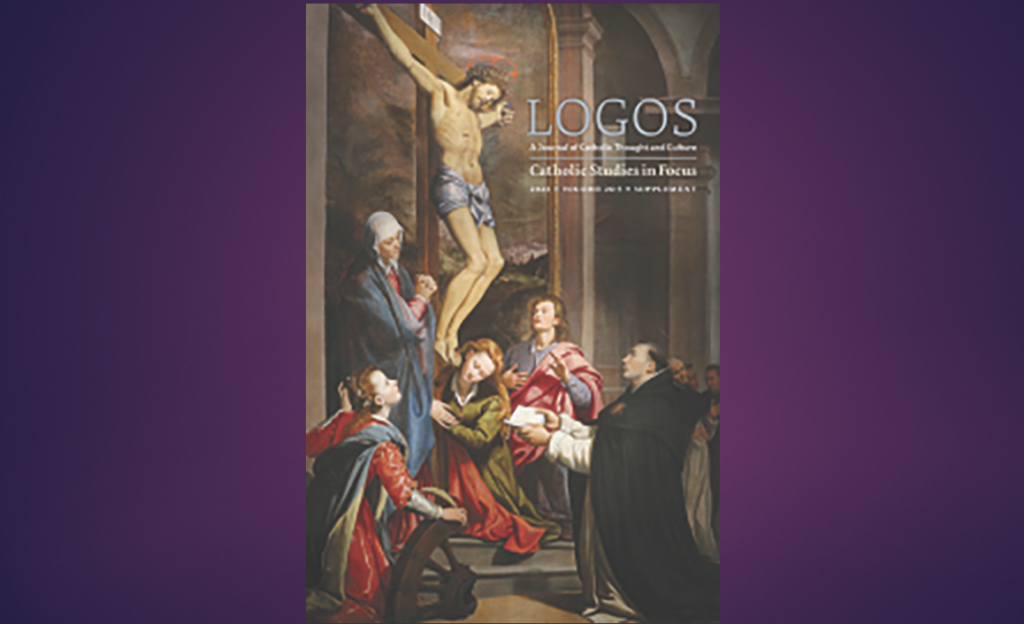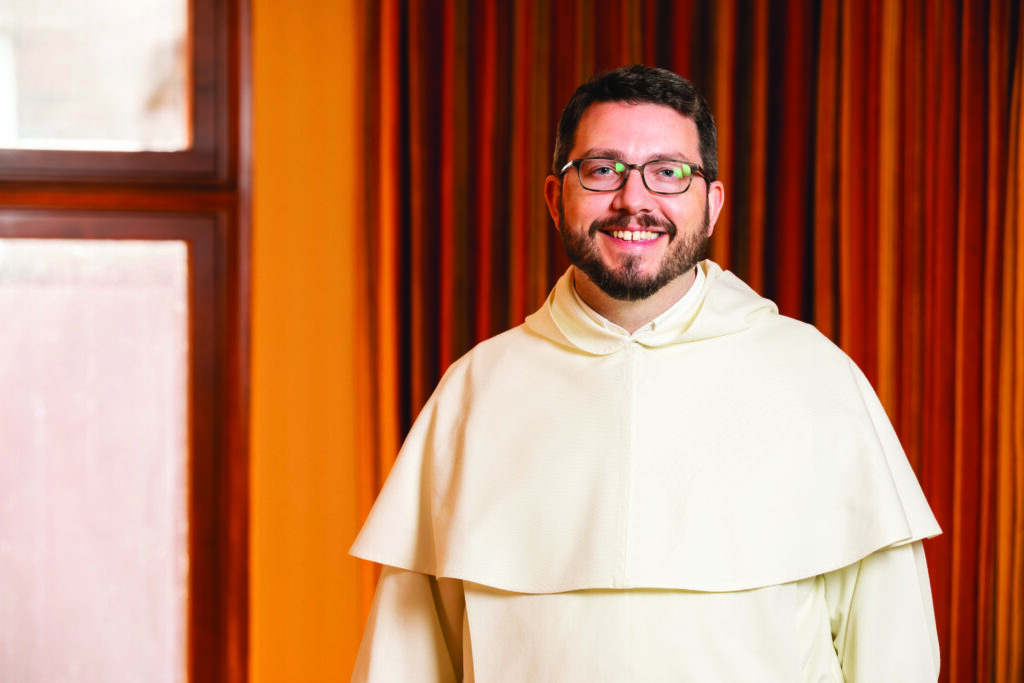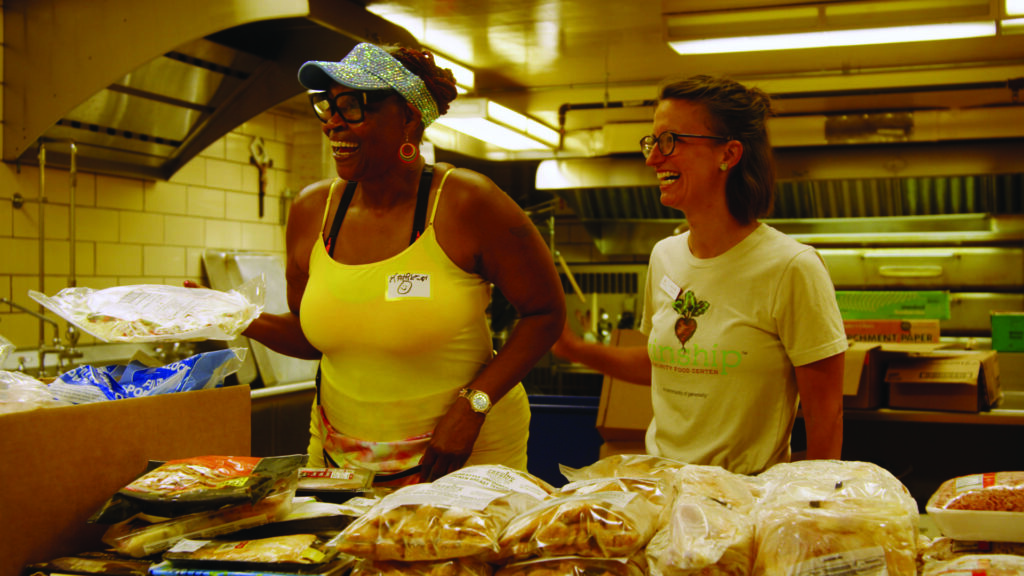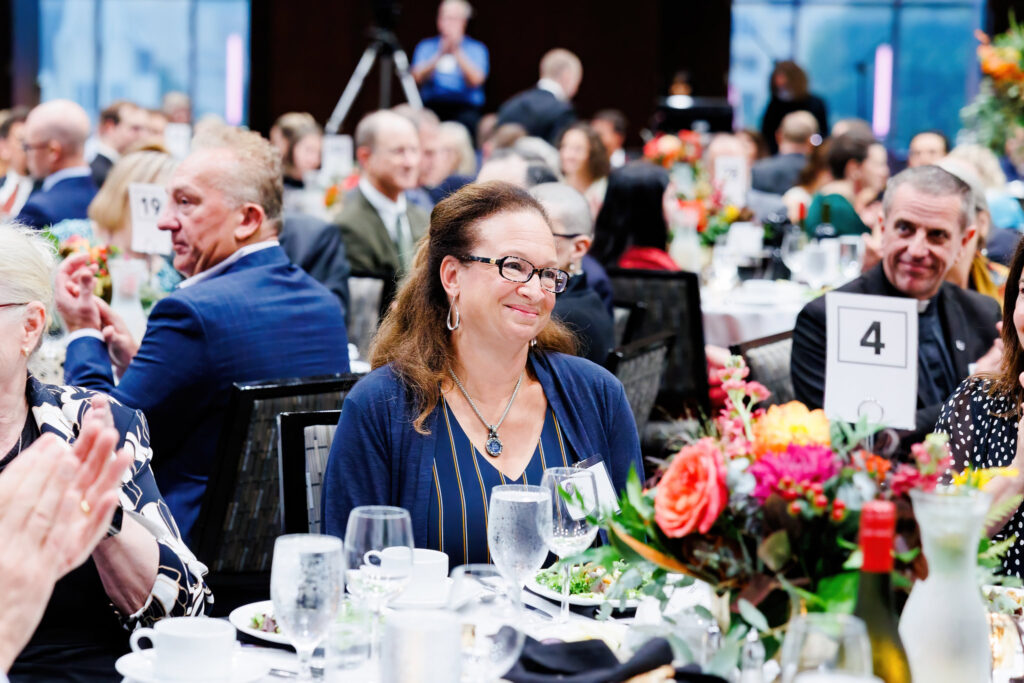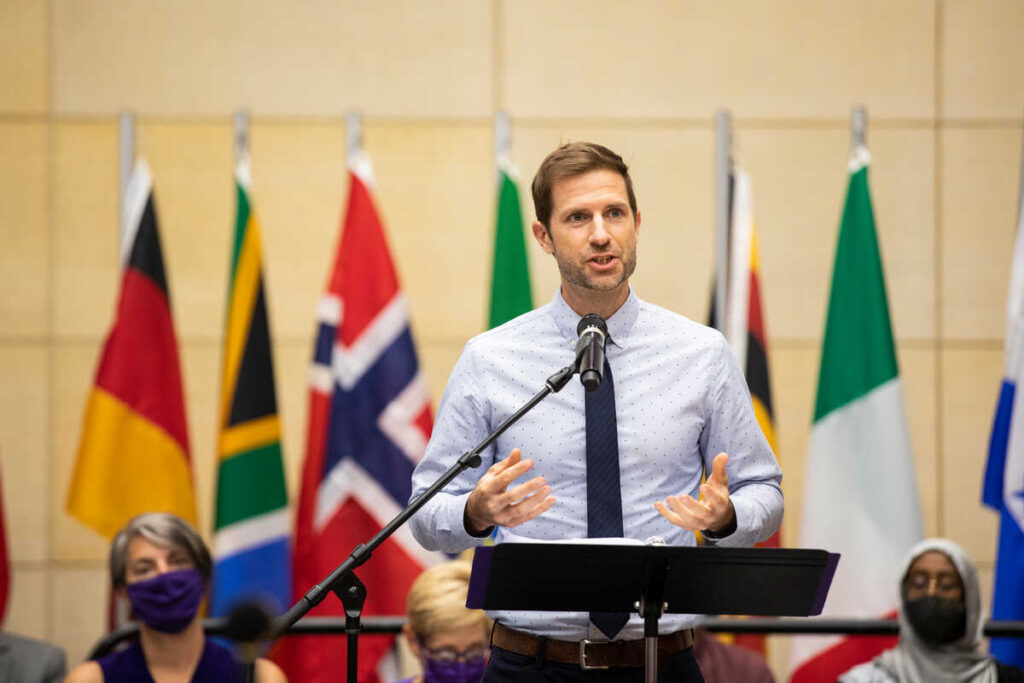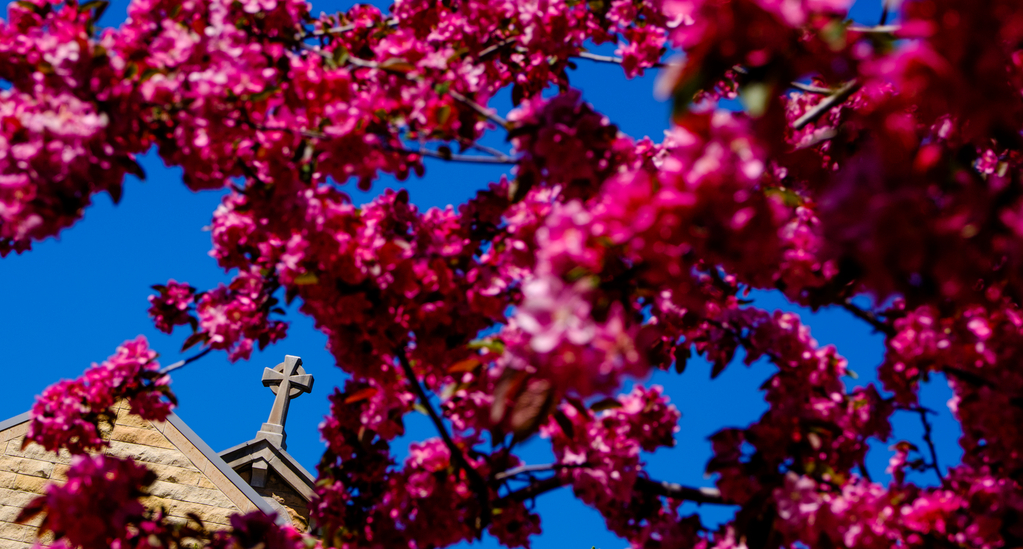Allow yourselves to imagine the beginning of America, of the New World. It was an incredible moment in history. The Church at that time considered this the final moment in the development of humanity. The missionaries saw it as a great opportunity to spread the Gospel. Had the moment been an encounter between very different people who became friends and began to enrich one another’s lives, it would have been beautiful. But it was not an encounter of friends; it was a very unequal encounter. And so began the great battles over control of the land.
The missionaries were convinced that in this new land they had found a place to start a new Church that would learn from the mistakes of the European Church and really re-create the Church of the Gospel.
The missionaries could not understand the religious symbolic world of the native people. They believed that whatever was different was diabolical and had to be eliminated. They also had to struggle against the pain that the people could still remember: the trauma of their brutal conquest. The natives would hear the message of the Gospel, the message of God’s love and compassion, but the lifestyle they saw was totally the opposite. So there were two totally antagonistic religions and cultures coming together, but there seemed to be a complete lack of communicability. I feel that the story of Our Lady of Guadalupe, which happened in 1531, is the key to knowing how we can build the new Church for the new millennium, the Church that will help us to turn what could be a destructive problem into a fascinating moment, a breakthrough of the spirit for humanity.
The Guadalupe story is very simple. In December 1531 – a cold month – an elderly Indian – probably about 56 years old, quite old for that time – who has been recently baptized, is on his way, walking to Tlatelolco to learn about God. As he is walking, he goes by the hill of Tepayac. It is beginning to dawn, and he hears birds singing such beautiful music that he stops and begins to question himself, thinking he is dreaming. But he goes in the direction of the music, and he hears a voice calling to him by name, “Juanito,” a term of endearment. He hears this call, and he goes toward it and sees a lady so beautiful that she radiates like the sun, and she stands upon the moon. In her presence everything seems to be transformed. She calls him by name and introduces herself to him, saying, “I am the Mother of the True God, the God through whom one lives, the God of the near and the far away, the God of persons, the God, the creator of all things. I have desired that you go to the bishop and tell him that on this site I want the bishop to build a temple where I can be ever present to all the inhabitants of this land, to show my love and compassion, to defend and protect, and be their ever merciful Mother.”
She sends him to the bishop. He’s quite happy about the encounter. He tries to see the bishop, but it isn’t that easy to get in to see him. But Juan Diego waits. Finally, the bishop sees him and listens patiently, telling him he has many things to do and to come back another day when he can listen to him.
Juan Diego knows in his heart that the bishop does not believe him. He goes back to the lady and apologizes to her, going into a painful litany of derogatory terms about himself. He tells her, “My lady, it’s very important that you pick someone who’s credible. That you pick somebody who has nobility, who’s important, who has prestige, so that you will be believed.” And the answer of the lady is beautiful: “My son, I have many ambassadors that I can pick from, but it is in every way precise that you, the most insignificant of my children, be my trusted ambassador.” So she asks him to go again.
He goes and again has trouble seeing the bishop. But this time the bishop is impressed. The fact that he’s come again, that he has told the whole story, and has not changed a single thing. But the bishop tells him, “Juan Diego, I need a sign.” Juan Diego startles the bishop, because he immediately asks, “What sign do you want?” He does not hesitate. And the bishop says, “The lady will know. She will know what sign to give me.”
He goes back, and the lady says, “Come back tomorrow, and I will have the sign.” He goes home, and his uncle, Juan Bernardino, is dying of one of the new diseases brought in by the conquistadors. Juan Diego decides to go get a priest to come and confess his uncle. He’s got to go back to the church, but he can’t go through the same route, because the lady is going to stop him again, and he’s got more important things to do. He has to find a confessor for his dying uncle. He takes a different route and gets quite embarrassed when he hears the lady calling him by name. He tells her, “My lady, I wasn’t trying to play tricks on you, I wasn’t running out on you. I really just have to go get a priest to confess my uncle.” The Lady tells him, “You have nothing to worry about. Your uncle will not die of this sickness. Now go up on top of the hill, and there you will find the sign that the bishop asks for.”
Juan Diego climbs to the top of the hill and finds beautiful flowers of all colors, beautiful flowers in December, out of season. He cuts them and, according to the story, the Lady herself arranges them in his tilma. The tilma is a little coat, a kind of a blanket worn around the shoulders. He puts the flowers in the tilma and goes to see the bishop. When he finally gets to the bishop, he unrolls his tilma, the flowers fall to the ground, and the image appears on the tilma as we have it today. The tilma is made of a cloth of maguey plant, which is a very rough cloth, like a potato sack cloth, a cloth that you would never paint on, a cloth that would have disappeared many, many years ago. According to the story, the bishop breaks into tears for not having believed sooner. Then they go see the uncle, who has been healed. It is the uncle who names her, “The Blessed Ever Virgin Mary of Guadalupe.” From there on the devotion begins.
In many ways, this story is the gospel of Jesus Christ presented through the imagery of the Indian world. Presented so that the Indian world, which could not understand the Spanish usage of religious terms, could understand the depth of the Gospel in terms they could appreciate.
This is the Guadalupe story. Guadalupe was a call to conversion. She called the Indians to new life, to a religion of compassion and mercy. But she also called the Church to a conversion, to enter into participation with the Indian world in creating something new. She called both of them to a new openness. We’re told by historians that in the next 10 years over 8 million people came to ask for baptism, that people would walk as far as 60 or 80 miles. All of a sudden, there was something new. There was a new understanding and a new appreciation.
What does Guadalupe tell us today? I think Guadalupe is about developing a spirituality of appreciating difference. I think in our natural way we tend to fear difference. We tend to fear difference as destructive. Look at the problems of the world today because of difference. The differences then were greater than any of our differences today, and yet Our Lady was able to reconcile those differences and begin something new. I think Guadalupe is precisely about developing a spirituality that appreciates difference as a gift of God. Appreciating that God did not make a mistake when he made different peoples to be who they are. That it is our task to bring out the goodness and the beauty of one another. I think today the Church can do this in the parishes. There are parishes where different people are coming in and the natural reaction is to fear: Why do they have to be different, to do things differently? The greater challenge of the Church today is to receive the foreigner into our midst and to receive him as a gift of God. I am thinking of a spirituality of appreciating difference, of openness to others. We have so much to learn from each other.
I believe that we can be a real gift to the world. We can be the leaders in something new. God is blessing our land with peoples from all over the world. Look at this past American Olympic team: Who were they, what were the names, what did they look like? I found it fascinating. I look at our golf champion today. What is Tiger Woods? Thai, African-American and American. One person bringing things together. Our Church can make the difference because we will bring about a unity, not of the world, but of the Spirit. The unity of the Spirit that, just like in the Acts of the Apostles, let the early Christians go through all kinds of borders to become a new human community, a new Christian community. We have an even more glorious moment today right within our home parishes. But we need to develop a spirituality, a spirituality of difference that will welcome even what we do not understand at the moment, knowing that when we do understand it, we are going to love it and become better for it. It’s not one over the other. It’s a win-win situation.
I think we need to let go of what is dehumanizing in our own culture and to show other people how to let go of what is dehumanizing in their culture. We all gain if we all are willing to let go a bit. I like to give the example that maybe the Spirit of God is bringing about a new stew. How do you prepare a good stew? You put in different ingredients, and then you have to boil it for a while. What happens in the boiling process? Everyone lets go of something, but everybody gains from what everybody else has let go. No one is destroyed, but you have new richness. And this is the society of the Spirit that we can build today.
I think today we need to learn from Guadalupe that in Christianity we emphasize dogmas and doctrines much – and I am not against that. Maybe more important for evangelization is the rediscovery of poetry, of music, of art and drama. What moves the heart to action? It is not dogmatic definitions. Again, I’m not against them. We need dictionary definitions to clarify literature. But you don’t study the dictionary to get excited about literature. I think we need the Magisterium; I’m not against it at all. I’ve worked on the new catechism a lot. But I think for evangelization we need a language of the heart. That’s what Guadalupe did, she entered Juan Diego’s heart through poetic and beautiful language. I think that’s what we need today, poetic, beautiful language and music.
Today we need more than ever a Gospel that will truly emphasize what Our Lady emphasized, and what Jesus emphasized: a Gospel of compassion. A gospel for whom people will be important. There are so many lonely people today – young people, old people, single people. We need a Gospel of compassion, of reaching out to each other. Our Lady reached out to Juan Diego and through him people started reaching out to each other. I think today Our Lady teaches us compassion, love, and a unity that bypasses all the divisions we can make.
And finally, I think the temple the lady was asking for has not yet been built. I think the temple Our Lady was asking for was not just a church building – and I think a church building is very proper – but I think the temple Our Lady was asking for is still a temple in the building. When our Holy Father called the bishops of the hemisphere together, they were talking about the Americas. Pope John Paul II corrected everyone and said, “No, it’s time you start speaking about America as a hemisphere. It’s time you start looking at becoming a common family.” It’s a dream, it’s a vision. But we are Christians, we are about vision; we are about dream.
Wouldn’t it be marvelous to create a real New World? Not just the problems of the Old World transported to a new territory, but a real New World? Couldn’t we dream and really work at it? I think it can come about if there’s a dream or vision that we can have an America without borders, an America where people come and go, looking for jobs, for work, for opportunity, and an America where people can seek educational opportunities and enrich one another with their customs, their music, their art, their foods. Wouldn’t it be marvelous if you could actually turn this into a real symphony of a new human family?
I think it can be done, and I think it begins at the parish level. At the parish level, we begin to see a parish that becomes like a plant growing in the greenhouse. Here we learn how to celebrate each other’s feasts, how to reach out and try to understand each other, how to appreciate the otherness of others. I think this is the beginning of the temple Our Lady wants. The ultimate temple that Our Lady wants will be a real New World: an America without borders that will be a real sign of peace and hope to a world that, at the present moment, is tearing itself apart by violence because of differences and lack of understanding. I think what Our Lady of Guadalupe started in 1531 is more real and more urgent today than ever before, and I think we’re about building that new temple. That’s why the pope wants to canonize Juan Diego, because the man who thought he was worthless, in effect, became the first and most important evangelizer of the entire hemisphere. If he could do it, you and I can do it too.
God bless you, and thank you very, very much.

